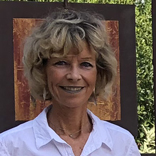November 26, 2018

Name: Janne Blichert-Toft
Title: Research Director
Institution: CNRS and Ecole Normale Supérieure de Lyon
Place of residence: Lyon, France
Personal website: http://perso.ens-lyon.fr/janne.blichert-toft/index.htm
Q: What kind of science do you do?
A: I am an isotope geochemist using radiogenic and stable isotopes as clocks and tracers to date and understand the workings and evolution of the Earth and other terrestrial planets and planetary bodies in our Solar System.
Q: Why did you choose this field?
A: Because I am a terrible field geologist with absolutely no sense of orientation and, until recently, with the vision of a mole! So the only place where I do not get lost is in my clean lab. Half-joking aside, although this is all true, it is not why I became an isotope geochemist. I got lucky, while doing my Masters degree in the late '80s, to meet Chip Lesher in East Greenland where I was working during the three-month summer season for a Canadian mining company, Platinova Ltd., prospecting for gold and platinum in the Skaergaard Intrusion. Chip invited me to Lamont on a project in which I would measure Sr and Nd isotopes in commingled basaltic and felsic magmas we had collected (in the form of rocks of course) from the Macrodikes near the Skaergaard Intrusion to complement Chip's Soret diffusion experiments (a project we succeeded in and which became my first scientific paper published in 1992). This is how I discovered I had a talent for chemistry and really enjoyed doing it as well as loved running the mass spec, especially the excitement of seeing the numbers coming off the machine in real time while trying to gauge how they might fit my predictions. This love for what I do has not changed in 30 years and is what still drives me! As a footnote for the younger generations, back when I was a student, it took eight hours on a manual single-collector TIMS to complete one Sr or Nd isotopic measurement! That made for a lot of white nights. Today it takes fifteen minutes by MC-ICP-MS and all of the manual tasks have become automatic! I can see how this is a good thing but I would not have been without what I learned the hard way.
Q: What's the most interesting place you've ever done field work?
A: East Greenland. Also the most dangerous (too many polar bears around)! And the most breathtakingly beautiful!
Q: What are you working on now?
A: The early Earth; mantle geochemistry; Pb isotope systematics in single chondrules; the origin, evolution, tectonics, and dynamics of continents; the rise of money in the Antiquity; radiogenic and stable isotopic tracing of crude oils worldwide; the Great Oxidation Event, re-assessing the role of life...; and ancient harbor geoarcheology.
Q: Any advice for someone starting out in geochemistry?
A: Only pursue a career in isotope geochemistry if you (i) are a good analyst and really love working in the lab, (ii) are prepared to work long hours, and (iii) are willing to make personal sacrifices which is almost inevitable. Points (ii) and (iii) are valid for most fields if you want to be successful. Most importantly, do not become an isotope geochemist if you are not stubborn and passionate about your work, or if you tend to become easily discouraged, because you will need passion and perseverance to overcome the difficulties and challenges in this competitive field, same as for most other fields within the earth and planetary sciences.
Q: If you could sit next to anyone on an airplane, who would it be?
A: My husband! Who else?! But on my other side, assuming I am sitting in the middle of an aisle, I would love to have Marie Curie, who was truly formidable and transformative as a scientist and a human being and an awe-inspiring role model for women. She has always been my uncontested role model and it was therefore very symbolic to me, especially when I needed reassurance as an early-career scientist, that my post-doc was on a Marie-Curie Fellowship. I think that, subconsciously, Marie Curie may also have had something to do with my initial attraction to isotope geochemistry.
Q: What's your favorite city in the world and why?
A: Copenhagen! Not because this is where I am from but because Copenhagen is a beautiful city, truly cosmopolitan (no need even to speak Danish to live there), yet pervaded with the Scandinavian spirit, on the water front with innovative new designs juxtaposed to old castles, an exceptional scientific heritage (e.g., Niels Bohr, Tycho Brahe, Hans Christian Oersted, Inge Lehman, Nicolas Steno....), bars with great ambiance and restaurants with outstanding food, both Old Danish and New Nordic, not to mention Carlsberg (which partly funded my above-mentioned project at Lamont as a student) and Tuborg, and the type locality for "hygge", essential for mental survival during the freezing, dark Copenhagen winter.
Q: What is your favorite downtime activity?
A: Reading books about history and history of science. And when I am "down" down, re-reading, for the umpteenth time, my childhood Asterix albums in Danish!